Steve McClure is a Marmot sponsored athlete and one of the world’s most prolific rock-climbers. having completed many of the world’s hardest climbs, as well as the UK’s toughest sport route which he named ‘Rainman’. But what does being a rock climber mean to him now in the age of COVID-19 and how is he keeping busy during the lockdown in the UK? Below he talks us through his own progression as a climber and how he’s looking forwards while staying at home.
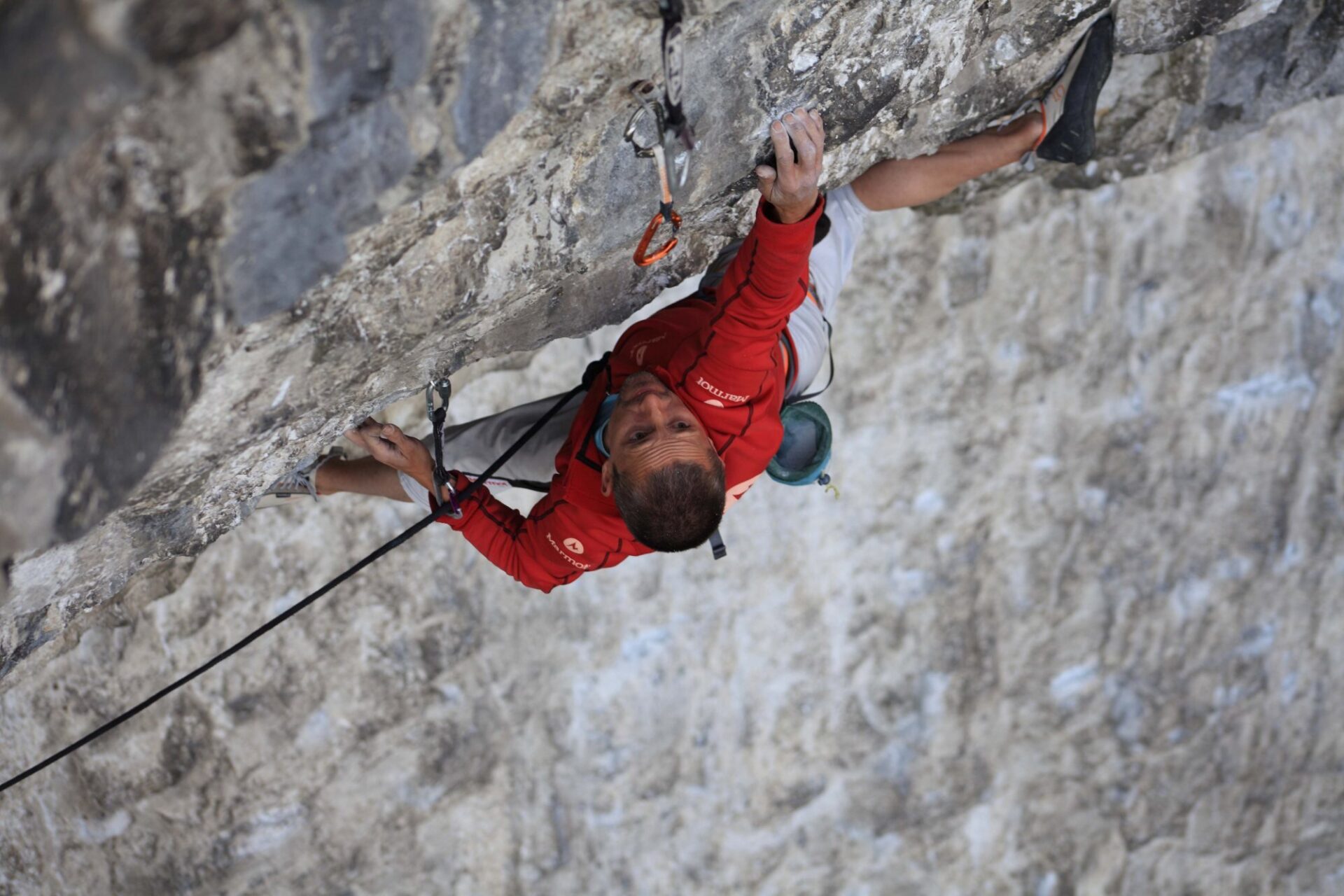
Steve McClure on Rainman – Photo © Ian Burton
What is rock climbing? A simple question. 40 years ago most people assumed rock climbing was the reserve of tough chaps scaling rocky cliffs in wild places. A rock climber was likely to be eccentric, and fanatical, a few screws loose perhaps, but without doubt passionate about their sport. Not that climbing was considered a sport, more of a lifestyle dressed up in scruffy fleece jackets. Ask the same question today and everyone has heard of climbing, most have been climbing. Climbing has become an everyday sport for all. But climbing is no longer considered ‘rock climbing’, and in fact the majority of ‘climbers’ have never touched real rock outside. The indoor climbing gym has become big business.
But climbing on rock itself has also undergone a huge transformation and surge in popularity, mainly due to a diversity that no eccentric climber from 40 years ago could have ever imagined.
I’m 50 this year and, introduced to climbing by my parents when I was only a few years old, I’ve been lucky enough to see climbing twist and turn through all the golden ages. When I first started it was all about ‘traditional climbing’. The ‘leader’ went up first, using only the rock for hands and feet. They tied a rope around their waist and took with them some equipment. As they ascended they jammed ‘protection’; metal wedges, into cracks and holes. With the rope clipped through this protection equipment, should they fall, this would save them from a ground fall so long as the ‘second’ (the person on the ground) kept hold of the other end of the rope. This may sound pretty dodgy, but protection, even 40 years ago could be fairly reliable. The seriousness of a route depended on a collection of crucial ingredients; how skilful the leader was in placing protection, how much protection they actually owned, and how many placements were offered by nature. Some routes were fairly safe, others insanely dangerous.
Standards in the ‘80s were incredibly high, but those pushing the limits tended to look at what was holding them back; mainly technique and bravery. Progression was all about spending more time on rock. But climbers were already looking to the vast smooth walls which appeared to offer excellent climbing but with a huge level of unjustifiable risk as there was simply no protection at all. The most gigantic step forward of all, in my opinion, was the introduction of the ‘bolt’. These permanent anchors were drilled into the rock; they never came out, were super strong, and allowed climbers to fall off repeatedly with the danger levels much reduced. And thus the birth of ‘sport climbing’, where the leader could push to the absolute limit. Standards accelerated forward. Almost instantly the cutting edge also realised that performance was now hindered by physical strength, training would give them the edge. Home training walls appeared around the country, and of course someone eventually asked the question ‘why not make a really big training facility for everyone to train in?’
Indoor climbing walls opened in places like Sheffield and Hull. Initially they remained the reserve of the rock climber and indeed catered for rock climbers who wanted their fix but were restrained by location or bad weather. But it didn’t take long before the general public showed an interest. How could they not? Climbing is physical, technical and engaging. It’s like the gym but way better! You can have a full body work out without even realising you’re doing it, and with a bunch of mates in a cool environment. ‘The Foundry’ in Sheffield and ‘Rockcity’ in Hull represent some of the best walls in the country that have moved with the times. Indoor climbing exploded; for a few years it was the fastest growing sport in the UK. Competitions followed. And this year, climbing would have made its debut in the Olympics, now rescheduled to 2021.
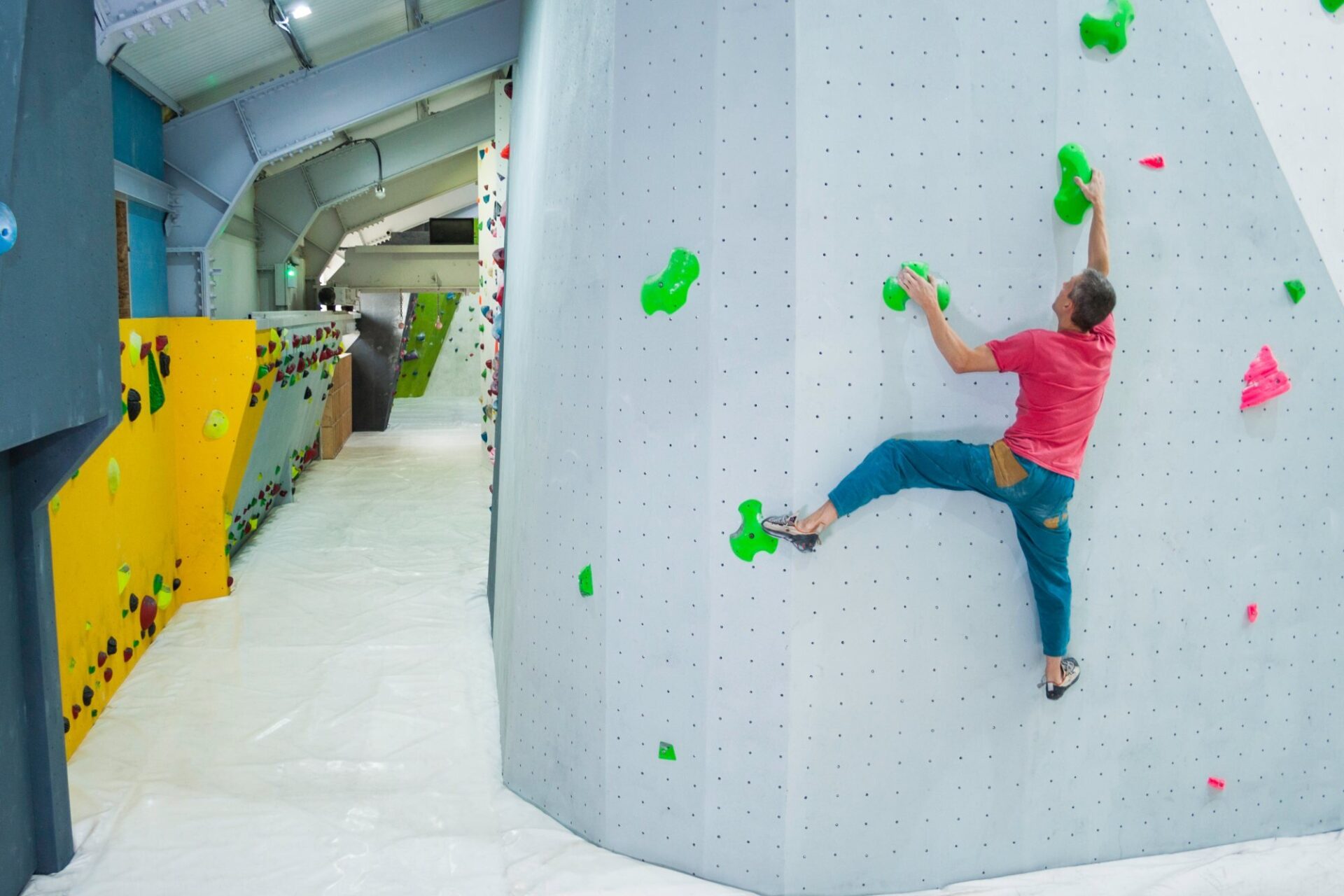
Rockcity, Hull. One of the country’s premiere facilities
At 18-years-old, I watched as sport climbing swept the climbing world, a radical change to my upbringing and a challenge to my ethics – to me the placing of a bolt was to remove some of nature’s challenge. But after a few nasty accidents and with a desire to really explore my ability I delved into the sport world and was instantly hooked. Wow, this was so addictive! The movement and tenacity, keeping it perfect when right on the limit. With the bolts a climber could fall off, see where they went wrong, find the best method, practice, and then go for it again. The ‘first go effort’ was replaced by a pre-practiced style more resembling a perfectly executed gymnastic routine that often took many attempts to complete. The standards of what could be climbed absolutely soared.
Originally from the North East of England I moved to Sheffield, self-proclaimed climbing Mecca drawing climbers from all around the country to the surrounding Peak District, home to some of the world’s best climbing. And my timing was perfect with dozens of unclimbed projects to attempt, tried by the best but still to go free. Some were world famous, already named and graded in anticipation and would become some of the best and hardest routes in the world.
But a new wave of climbing was sweeping through. Bouldering saw climbers tackling relatively small rocks where the fall is short without the need of a rope. To date, this has become by far the most popular form of climbing, both inside and out. Bouldering pads (like mini crash-pads) save any jarring impact, and fully padded indoor bouldering centres have taken the world by storm. The appeal is ultimate difficulty – executing moves unencumbered by any equipment and fear. Power and strength are king. For many climbers this style has completely taken over, many climbers don’t even own a rope!
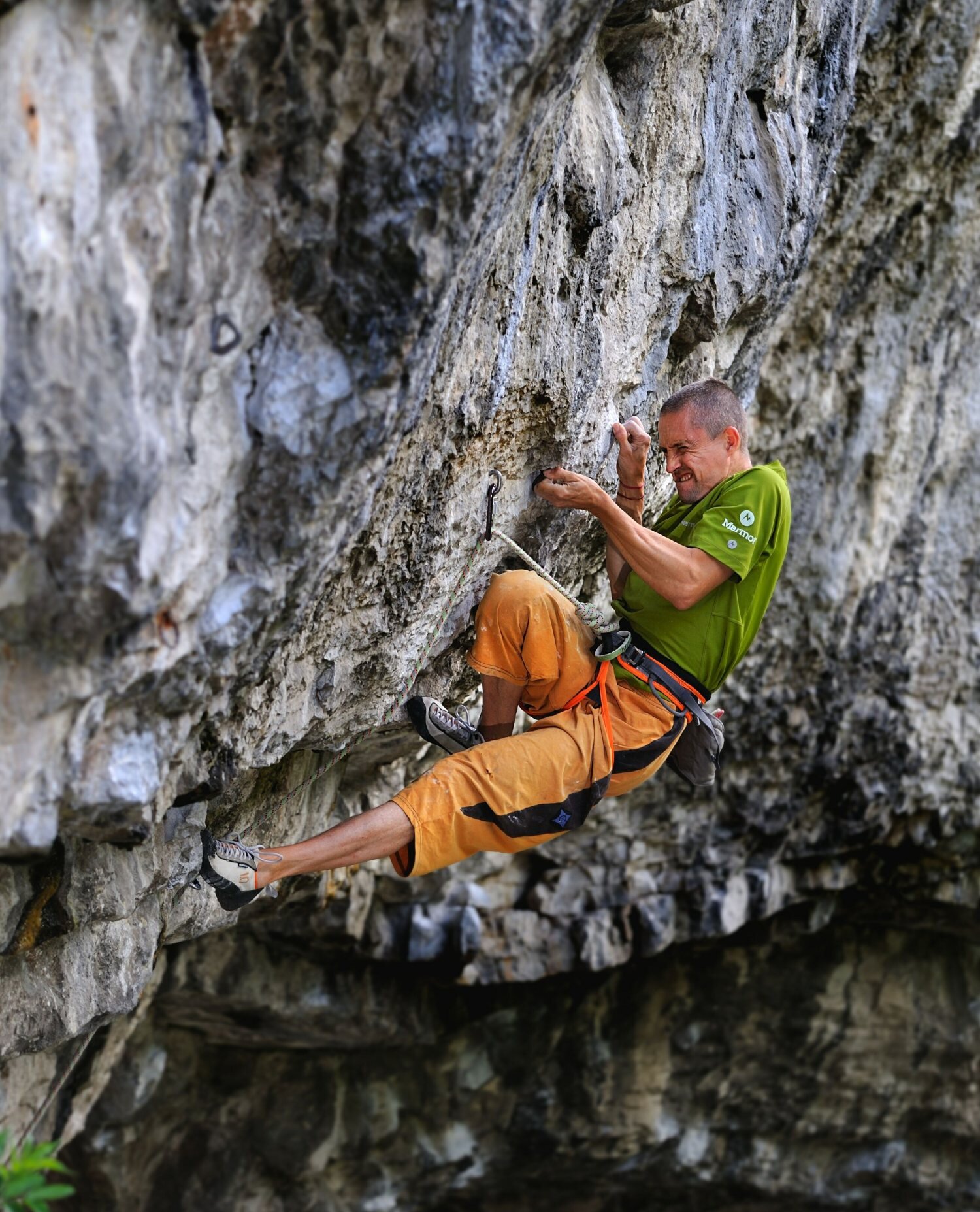
Steve making an ascent of ‘Hubble’. This was the world’s first 9a climb, ascended in 1990 by Ben Moon. Photo © Tim Glasby
I say my timing was perfect, as the elite were drawn into bouldering I simply worked my way through the last great sport climbs, building an entire career on the hardest routes in the country. I’m no boulderer, I’m not powerful enough. But more importantly, I get way more out of roped climbing; routes are so much more involved, mentally immersed, functioning without thought like a super-computer robot to emerge at the top in a heightened state of mind. For some, the intensity is too much for too long, but for me it’s everything. And I found myself getting sucked into ultimate difficulty – ‘limit climbing’, where a climber pits himself against a route so close to their personal maximum limit that they may never achieve it. In this game, hundreds of attempts may be made, maybe thousands on just one route. The climber will practice it, become utterly familiar with it, every move, every hold, even every hold they don’t even use. They will know how strong and fit they need to be, training specifically, perhaps even on indoor replicas. A project could take years, decades, and could still remain unclimbed, such is the nature of the limit, to explore at the limit risks stepping over it and reaching too far. Many people fail in their quest! In 2017 I found my limit, with an ascent of a route I called ‘Rainman’. A 128 day effort spread over 7 years, it captivated me. It’s the hardest route in the UK, graded 9b and remains unrepeated. I learned a ton about my climbing, my strengths and weaknesses and how to use and overcome them. I trained more than ever before and was the best I could be, the route demanded it. I reckon I only just scraped it, but I’d not have had it any other way.
The beauty of climbing is there is always so much to do, so many different styles, so many different places. The world is simply full of rock. Recently I’ve been drawn back to the traditional style, bringing together all the strengths I’ve gained over the years to push myself right to the limits only this time with risk and danger to consider. To climb at your physical maximum while aware of your situation, constantly monitoring your safety while still at the physical limit; this to me represents the ultimate climbing experience.
The problem with climbing is that it’s so good, it’s hard to not do it! Right now, under lockdown with COVID-19, rock climbers are looking to the hills and missing their craft. We are all born wild, with a need to be out there, amongst nature and feeling the bite of rock under our skin, exploring new terrain and what we can endure. For now the outdoors will have to wait. But that born-wild trait runs deep in some, and they will get their fix somehow. There will be training like never before, and crazy ideas. For myself, a stroke of luck really! As a kid I spent hundreds of hours climbing sideways on our garage wall using just the tiny gap between the bricks for my hands and feet. I think this was the ultimate training for real rock. Now the brick wall in my garden cries out to be climbed. Previously unnoticed, suddenly this wall of natural stones cemented together has become an incredible challenge and source of inspiration. I’ve bolted it, cleaned the holds, worked out the best sequence. I’ve practiced it and refined it…. Its hard! And that’s good, I don’t want it easy. I’ve laid in bed going through the moves in my head. Tomorrow I’ll go for an ascent, no falls from bottom to top – now that is exciting!
As the elite were drawn into bouldering I simply worked my way through the last great sport climbs, building an entire career on the hardest routes in the country.
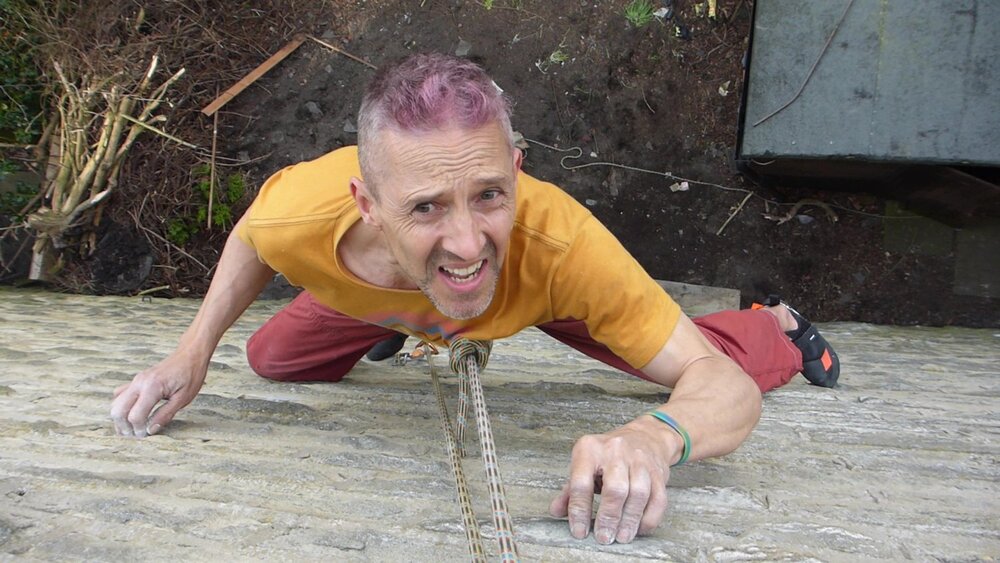

But I’ve been lucky, almost no one will have such a thing to focus on. Most are training hard for when they emerge back into rock climbing again. And to be honest that’s what I should be doing, and alongside the ‘house wall project’ that’s what I’m doing. The house wall is just like another climb outside, it’s vertical, has small holds and is very technical. It’s all my strengths and none of my weaknesses.
Some years ago a friend of mine told me ‘if you want to climb harder you should completely stop climbing outside for 6 months, train properly indoors and address all your weaknesses. Get strong and stop being sidetracked by outdoor routes’. He was right, but of course I never followed his advice. Now is a fantastic opportunity for myself and many people to focus. Gains from training require consistency and routine for more than just a few weeks; we have more than a few weeks! I’ve focused on three main areas, fingers, core and biceps, three areas I know I can strengthen and I know will make a difference to my climbing. For many people like myself just a limited amount of training equipment is needed to provide all the necessary focus and motivation. I’m using a ‘fingerboard’ which is essentially a very very small climbing wall (just perhaps 70cm wide by 40cm high covered with different size and shaped holds for the hands). Maximum hangs from the board and pull-ups and core work are all possible. It may sound boring, but two hours on the board every other day, and the steady gains achieved, combined with the dreams of moving fluidly and powerfully on real rock with the sun on my back in the mountains make each session something to look forward to.
Don’t miss a single adventure
Sign up to our free newsletter and get a weekly BASE hit to your inbox
You might also like
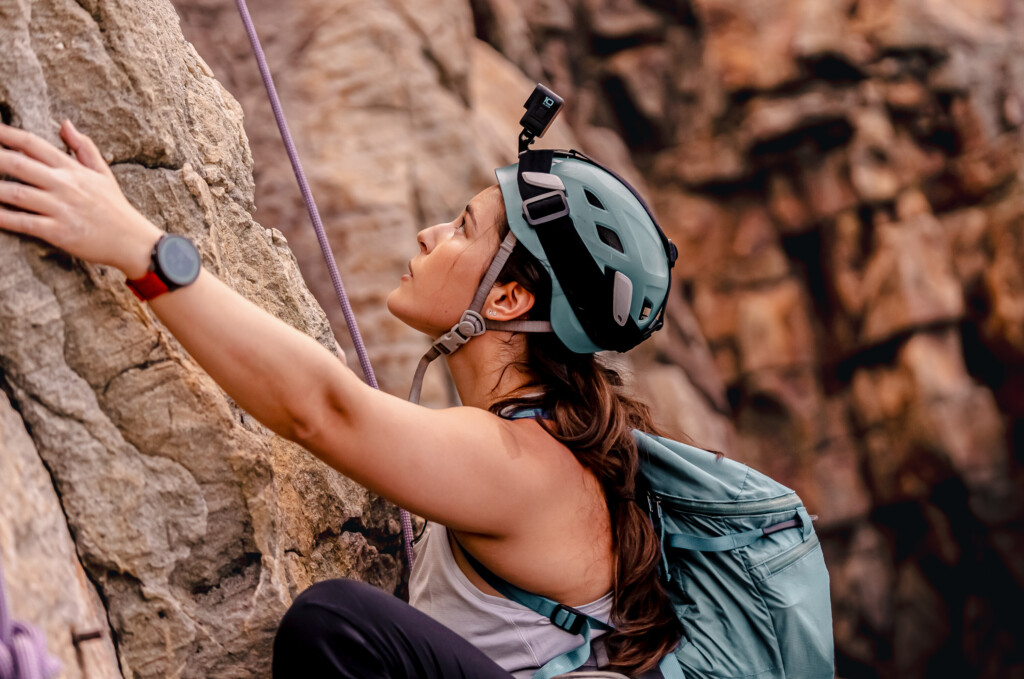
Photo Essay • BASE editorial team • Mar 18, 2024
Hunting happiness through adventure in Taiwan
BASE teams up with adventurer Sofia Jin to explore the best of Taiwan's underrated adventure scene.
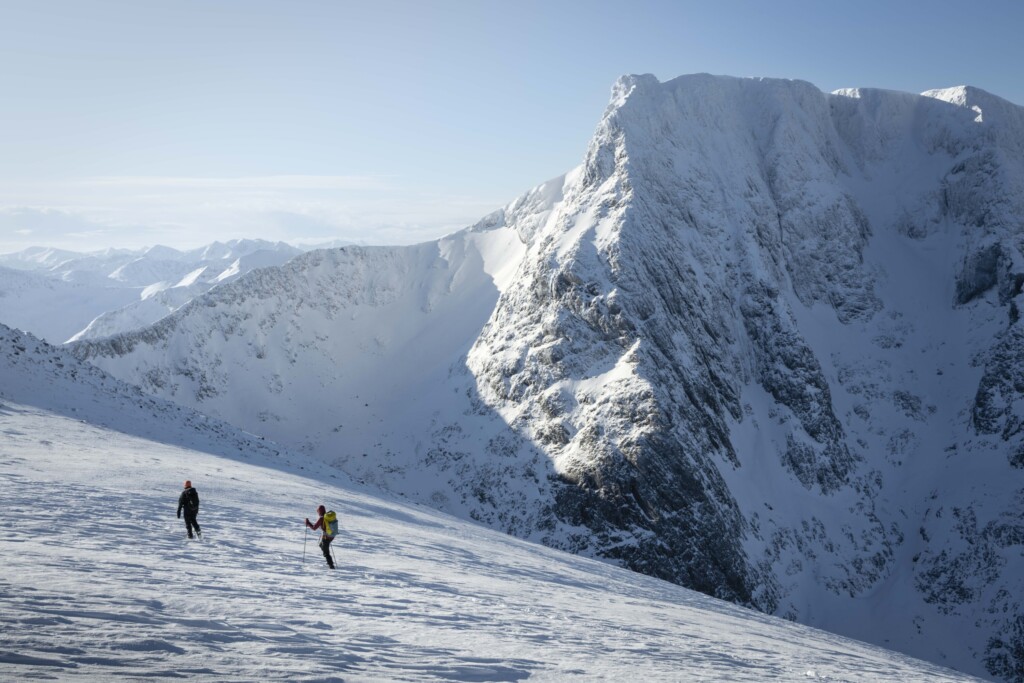
Story • BASE editorial team • Nov 21, 2023
Five Epic UK Climbs You Should Try This Winter
Craving a snowy mountain adventure? Inspired by the Garmin Instinct 2 watch (into which you can directly plan these routes), we've compiled a list of five of the best for winter 2023-24!


Video • BASE editorial team • Jul 04, 2023
Zofia Reych On Bouldering, Life And Neurodivergence
Climbing is a driving force in Zofia's life, but for a long time, it also seemed to be a destructive one

